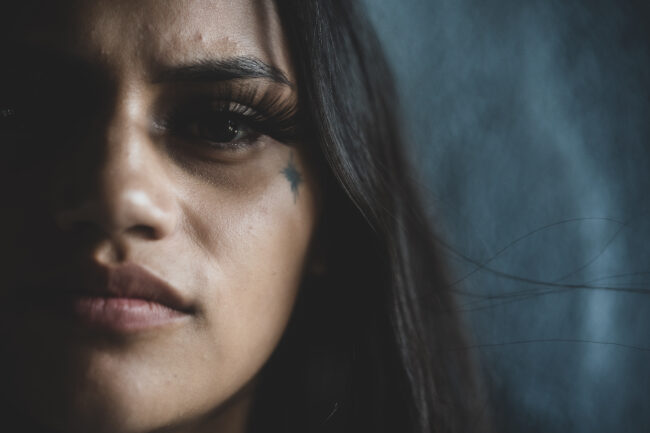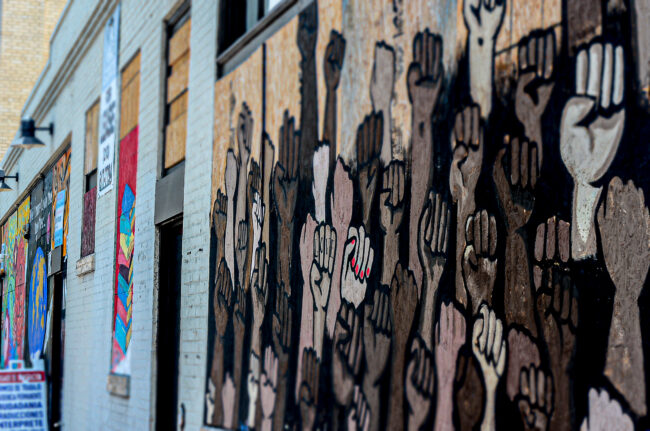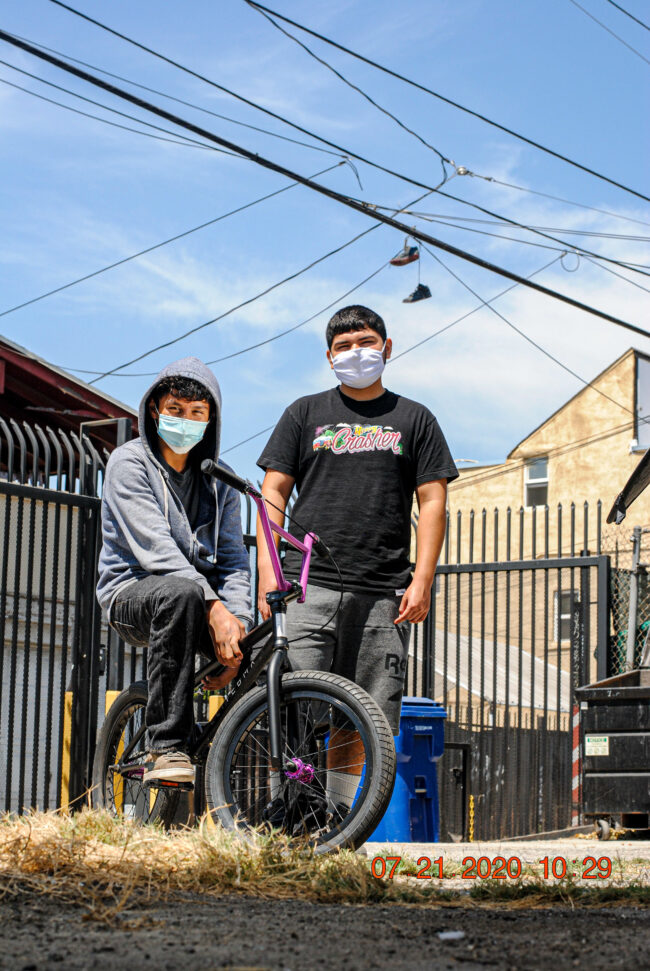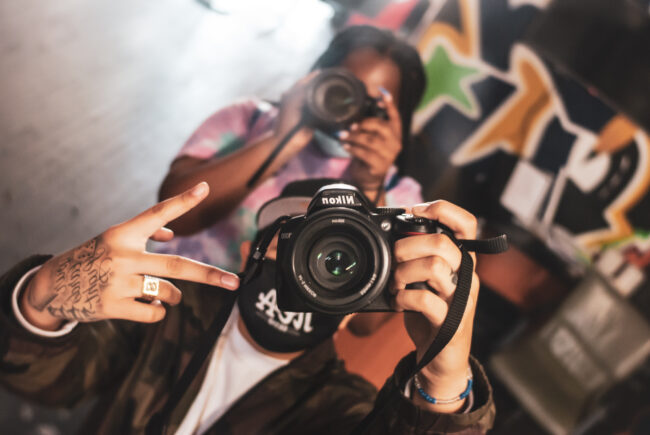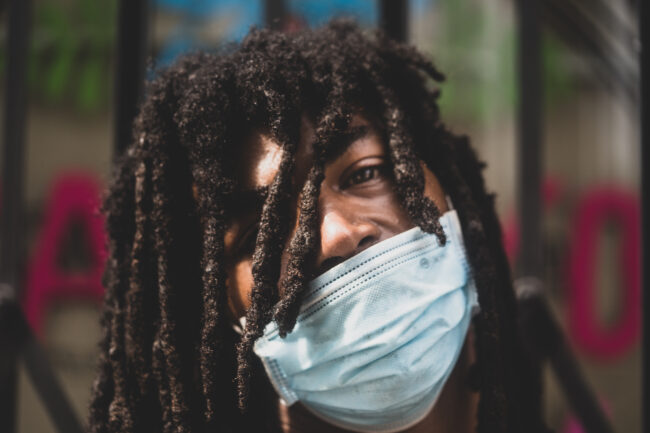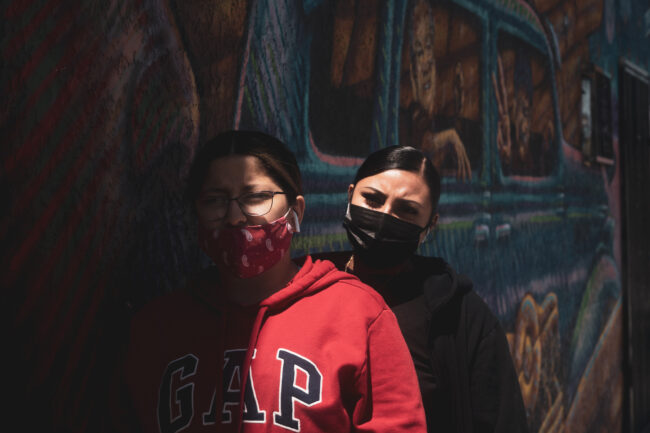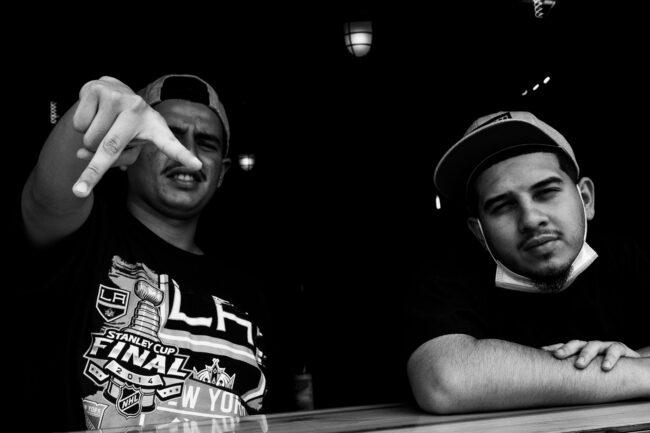Miguel Casar is a PhD student at the University of California Los Angeles, a doctoral researcher at the Center for the Transformation of Schools at UCLA, and an adjunct professor at Cal State Dominguez Hills. His work focuses on exploring the the tensions, contradictions, and possibilities that exist and emerge in the spaces between schools as places of social reproduction, racial violence, colonial and neoliberal assimilation, and the legitimizing of injustice; and schools as places of possibility, future building, community healing, and liberation. He believes in the transformational potential of re-claiming and re-imagining schools as foundational to imagining and building democracy, conviviality, and social change. Miguel also enjoys spending time in the mountains, taking photos, and sharing those two with the youth that he has the honor to learn from. We connected about a photography project he developed, the images shared above are from his students.
Heidi: How did this student photo project develop?
Miguel: It is always hard to trace back the genealogy of a project like this for me. At its heart, this project goes back to a deep belief in the power of stories, a commitment to justice, a group of young people, and the forging of a set of relationships and a community that has continued to grow.
Although I have never dedicated myself to photography, I have always loved taking pictures and the idea of taking photos as a way to interrogate the present and reclaim our right to storying began to grow on me a couple of years ago. Whether it is through challenging dominant perspectives, an oppressive and violent gaze, rushed notions of temporality, settler colonial values and aesthetics, or any of the dozens of layers through which normality participates in oppression; there is latent power to be claimed. At the same time, replicating larger patterns across our society, this power is often only recognized as if it was held only in the hands of some. This not only acts as a barrier to the surfacing of others’ stories but actively dismisses and deligitimizes a multiplicity of perspectives, imaginaries, and futures.
This project, alongside much of my work, rests upon the idea that these imaginaries and these futures are not only important but necessary to us building just, free, and kind futures.
What direction did you give the students for this exploration?
There were actually just a few directions, if we could even call them that. Pedagogically, there were “exercises” and “activities” where we all went out to capture things like beauty, struggle, and fear, among others. At the same time, we would collectively have dialogue around who takes pictures, whose representations become ubiquitous, and how stories and the representation and storying of others’ identities contribute to issues that are relevant to our lives, like criminalization, racism, sexism, and the reproduction of the carceral state, among others.
Being emotionally literate and staying developmentally responsive is at the core of what you do, how did photography help that?
I don´t know how much being emotionally literate I actually am, especially having grown up as in a machista, patriarchal, misogynistic society where to feel was a sign of weakness… Having said that, a writer that I deeply respect (Fanon) wrote that when we possess language we also possess the worlds expressed and implied by that language, which makes me feel of all that I have learned and grown by engaging with language (photo as story) alongside the youth. It is a beautiful experience to allow ourselves and create deliberate spaces to name and to story our worlds.
What did you learn about your own work after reviewing the students’ images?
I think one of the biggest findings of this project, as I often find in my work, is both a recognition of the beauty and complexity of the human spirit, and a simultaneous reminder of how flawed and mistaken are many of our assumptions of what is actually happening in the world. Perhaps the most sobering lessons continues to be how invisibile oppression is, how these deep structures of racism, misogyny, settler colonialism, and “modernity” have been solidified into a complete “taken for grantedness”. Working alongside, and in community with young people that are actively marginalized by these very systems is not only a reminder, but a call to action…
How does your love for climbing transcend into your work life?
There are countless lessons that climbing has taught me, all of which are deeply connected to the work I do. From facing fear, to the power of our own minds over us, to the importance and power of community, to feeling small and deeply interconnected… I think most of these lessons I have etched into my being and are now deeply entangled with most of what I do.
